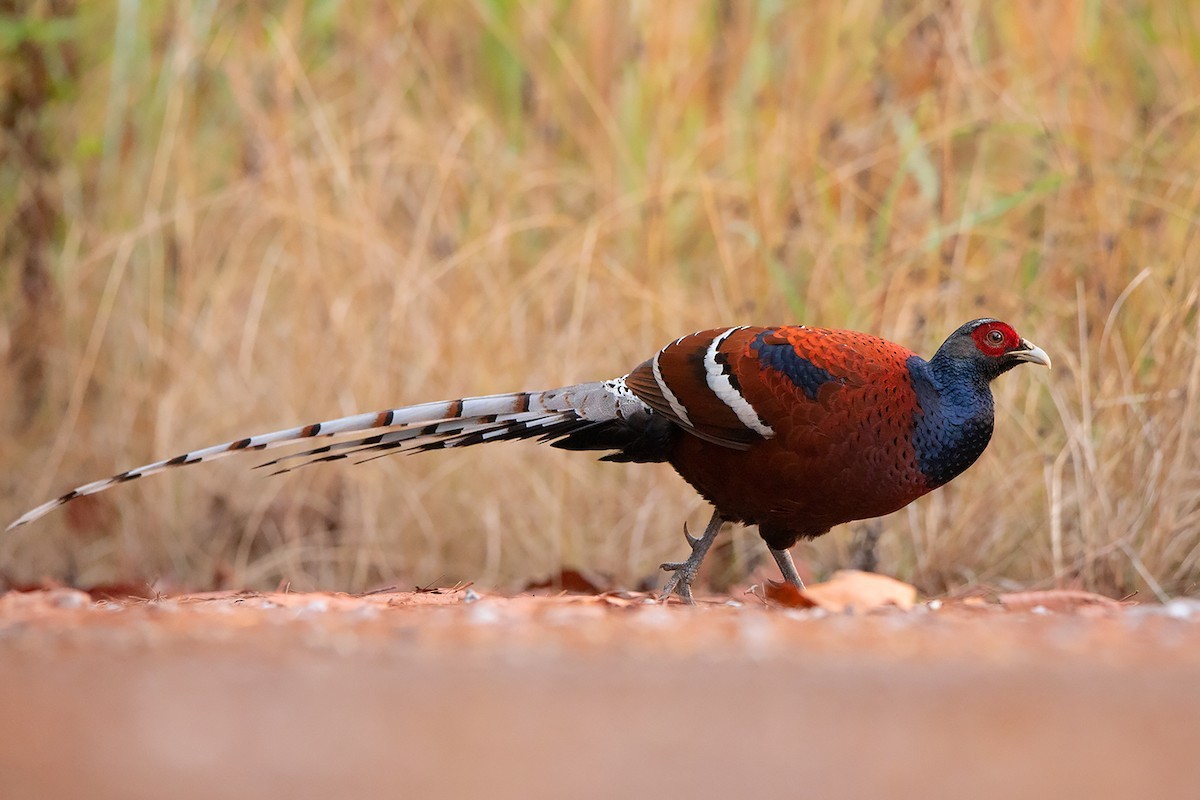Mrs. Hume's Pheasant
A species of Long-tailed pheasants, Also known as Bar-tailed Pheasant Scientific name : Syrmaticus humiae Genus : Long-tailed pheasants
Mrs. Hume's Pheasant, A species of Long-tailed pheasants
Also known as:
Bar-tailed Pheasant
Botanical name: Syrmaticus humiae
Genus: Long-tailed pheasants
Content
Description General Info
 Photo By Ayuwat Jearwattanakanok
Photo By Ayuwat Jearwattanakanok Description
Mrs. Hume's pheasant (Syrmaticus humiae), also known as Hume's pheasant or the bar-tailed pheasant, is a large, up to 90 cm long, forest pheasant with a greyish brown head, bare red facial skin, chestnut brown plumage, yellowish bill, brownish orange iris, white wingbars and metallic blue neck feathers. The male has a long greyish white, barred black and brown tail. The female is a chestnut brown bird with whitish throat, buff color belly and white-tipped tail. This rare and little known pheasant is found throughout forested habitats of the Patkai Range, Yunnan and northern parts of Myanmar and Thailand. The diet consists mainly of vegetation matters. The female lays three to twelve creamy white eggs in nest of leaves, twigs and feathers. The name commemorates Mary Ann Grindall Hume, wife of the British naturalist in India Allan Octavian Hume. It is the state bird of Mizoram and Manipur. Owing to ongoing habitat loss, fragmented population and being hunted for food, the Mrs. Hume's pheasant is evaluated as Near Threatened on the IUCN Red List of Threatened Species. It is listed on Appendix I of CITES. 
Size
90 cm
Nest Placement
Ground
Feeding Habits
Mrs. Hume's Pheasant forages on a varied diet exceeding 40 plant species, including seeds, fruits, and roots, with a preference for Castanopsis eyrei and Eurya groffii. They consume mostly plants (over 97%) but young birds' diets include 50-90% insects. Mrs. Hume's Pheasant likely forages in family groups, predominantly in morning and evening hours, favoring eastern and northern forest slopes.
Habitat
Mrs. Hume's Pheasant typically inhabits forested regions with a variety of woodland habitats. It prefers open oak–pine forests with clearings and areas adjacent to slash-and-burn plots, alongside grassy patches and bracken on rocky hillsides. It is also found in evergreen, broadleaved, and mixed forests, which may include conifer plantations. Mrs. Hume's Pheasant has a tendency to roost in tall trees, favoring oak and pine species among others.
Dite type
Omnivorous
General Info
Feeding Habits
Bird food type

 Photo By Ayuwat Jearwattanakanok
Photo By Ayuwat Jearwattanakanok Scientific Classification
Phylum
Chordates Class
Birds Family
Phasianidae Genus
Long-tailed pheasants Species
Mrs. Hume's Pheasant